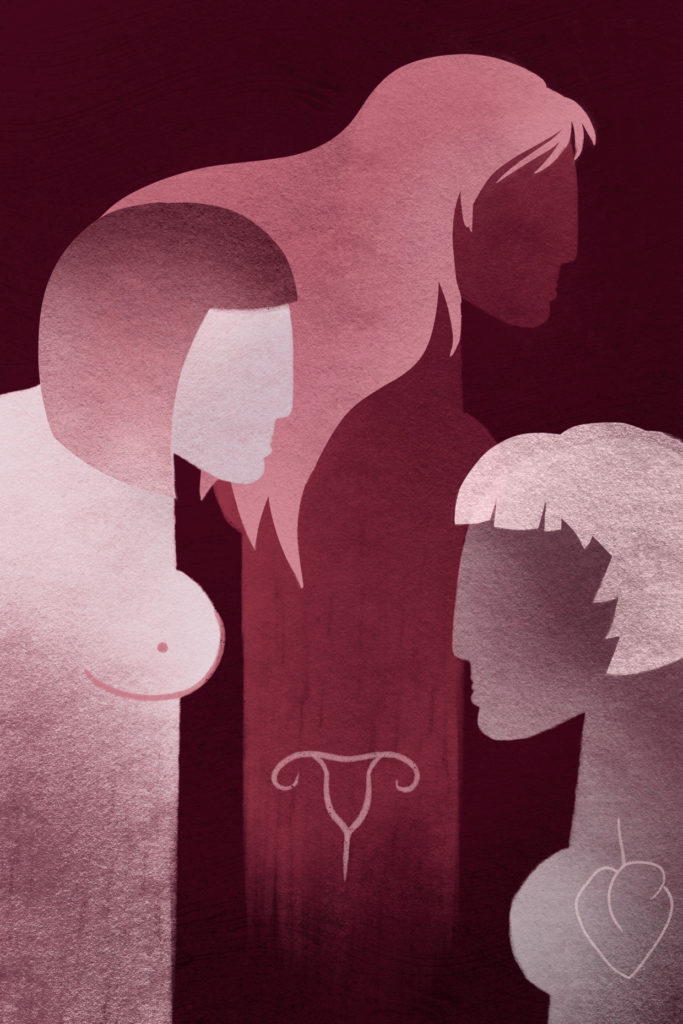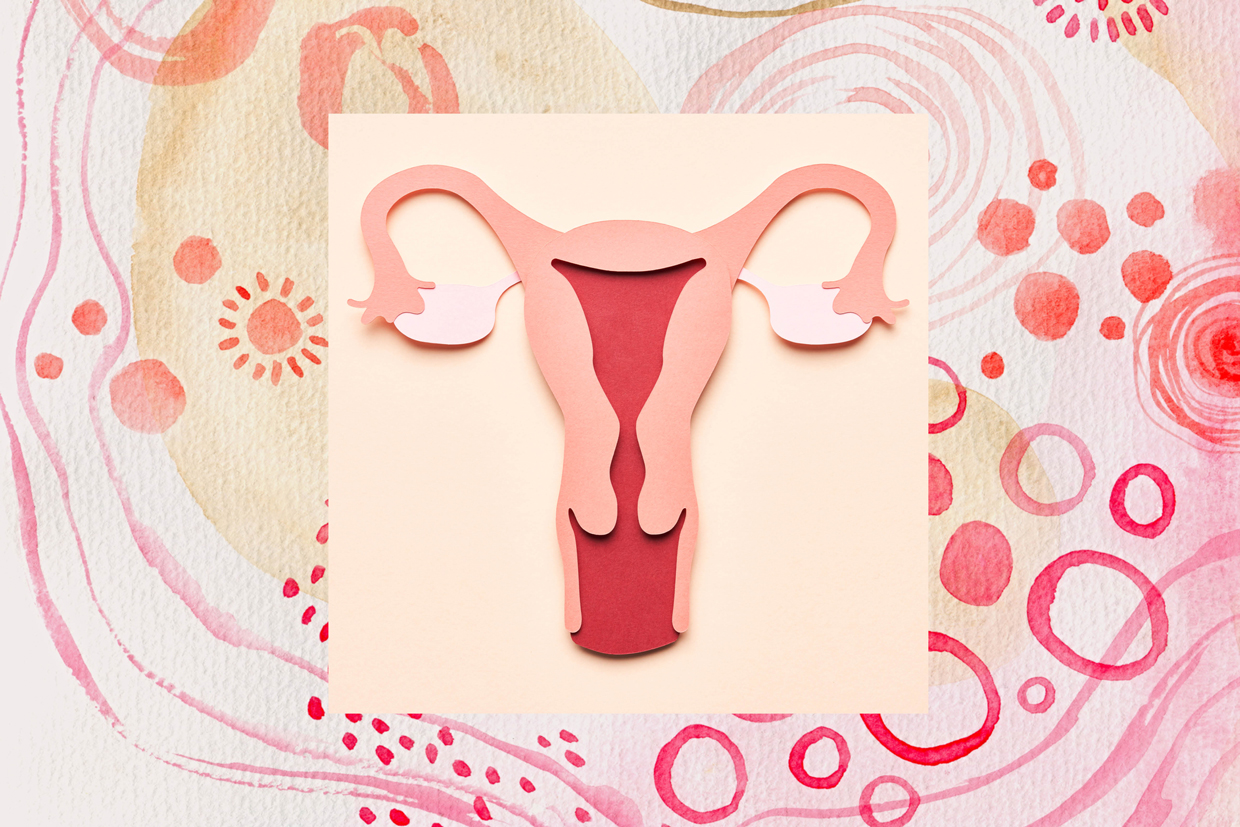Cancer sucks — no matter the type — and many of us know the grief it causes, whether directly or through family members and friends. During National Ovarian Cancer Awareness Month, every September, we recognize the hardships of those affected by ovarian cancer. While it’s a relatively rare cancer, according to cancer.com, ovarian cancer ranks fifth in cancer deaths among women (about 13,770 deaths predicted for this year). This is because it’s hard to detect until it’s in its late stages. That’s why this month serves as a necessary reminder for women to equip themselves with the proper knowledge about how to spot the symptoms, determine their risk levels, and figure out what they can do to prevent them. Below, Ruth D. Stephenson, DO, FACOG, a gynecologic oncologist in the Gynecologic Oncology Program at Rutgers Cancer Institute of New Jersey, helps us dives in:
What is ovarian cancer?
Your ovaries, located on either side of the uterus, are a part of the female reproductive system that stores and produces eggs in addition to making estrogen. “Ovarian cancer is abnormal cells that grow quickly on the ovaries and can spread around the abdomen and throughout the body. Ovarian cancer can also start in the fallopian tube and arise in the lining of your abdomen,” says Stephenson.
What are the different types of ovarian cancer?

While there are more than 30 different types of ovarian cancer, they’re grouped under categories depending on the type. “There are three different types of cells on the ovary and three different classes of ovarian cancer that come from these cell types. There are germ cell and stromal cell cancers, which are rare, and epithelial cell cancer, which is the most common,” she says. Epithelial cancer, which accounts for about 90% of ovarian cancers, develops on the surface epithelial tissues outside the ovary.
What causes it?
“About 10-20% of ovarian cancers are due to an identifiable genetic mutation either passed through your family or coming from the actual cancer cells. Unfortunately, a majority of the time, we don’t know what causes it, but research is ongoing to further determine the source,” says Stephenson.
What makes someone more likely to get ovarian cancer?
All women carry a level of risk, but certain factors may make you more likely to develop the disease:
- You’re older than 40 (90% of women with ovarian cancer meet these criteria, with the greatest number of ovarian cancers occurring over the age of 60, according to the CDC)
- You have a family history of ovarian or breast cancer
- You have a personal history of early breast cancer
- You’re of Ashkenazi Jewish heritage
- You’ve inherited specific mutations in genes like BRCA1/2 or Lynch syndrome
- You have endometriosis
- You frequently get your period early
- You’re going through menopause
- You’ve never given birth
Remember, it doesn’t necessarily mean you’ll get ovarian cancer if you meet one or several of these aspects, but it’s important to talk with your doctor if you’re concerned.
Are there ways to reduce your risk?
There isn’t a magic way to prevent getting ovarian cancer, but “pregnancy, oral contraception, tubal ligation, or having your ovaries and/or fallopian tubes removed can all reduce your risk,” says Stephenson.
What are the symptoms?
A part of why ovarian cancer is so deadly is because “it spreads very quickly and the initial symptoms can be very subtle and mild. However, the symptoms are usually constant and represent a change from how you normally feel, and the symptoms may continue to get worse,” she says. The symptoms can be tricky and lead to misdiagnosis as they are often similar to when you have more common stomach-related diseases or conditions like IBS.
- Abdominal bloating or swelling
- Pain in the abdomen or pelvic area
- Difficulty eating, feeling full quickly, or a lack of appetite
- Feeling an urgent need to urinate
- Urinating more often than usual
- Experiencing constipation or diarrhea
- Differences in your menstrual cycles or periods
- Vaginal bleeding in between your menstrual cycles
- Back pain
- Sudden weight gain or loss
The general rule of thumb is if you’re experiencing any of the signs for longer than two weeks, it’s best to see a medical professional. A transvaginal ultrasound, a CA-125 blood test (increased levels of the CA-125 protein might suggest ovarian cancer), or a rectovaginal pelvic exam can help rule out ovarian cancer. A Pap smear (which is done during your annual exam) only screens for cervical cancer.
What type of doctor should you see if you’re experiencing symptoms?
A new drug combination has shown promising results — significantly shrinking ovarian cancer tumors in almost half of patients tested in a trial presented at the European Society for Medical Oncology congress.
“All women with a concern for ovarian cancer or a diagnosed ovarian cancer should see a gynecologic oncologist, a specialist who is trained in the medical and surgical management of gynecologic cancer,” says Stephenson. Studies show that if you are treated by a medical professional specializing in gynecological cancer (as opposed to, say, a more general oncologist), you have a higher survival rate.
What’s the likelihood of survival when you’re diagnosed with ovarian cancer?
Each person is different, and — as with many cancers — early detection leads to a better outcome. Unfortunately, ovarian cancer likes to keep coming back, even if you seek aggressive treatment. According to the Ovarian Cancer Research Alliance, only half of women with ovarian cancer will be alive five years after diagnosis. Your chances of survival all depend on a variety of factors, including the stage, type, and your history.
Are there any new advances in the fight against ovarian cancer?
There are a few reasons we can be optimistic: Luckily, the diagnosis rate for ovarian cancer has gradually been declining in the past two decades. President Biden recently announced a $6.5 billion investment to develop breakthroughs in preventing, detecting, and treating cancer and other diseases with a specific focus on the early detection of ovarian cancer. Though more research is needed, a new drug combination has shown promising results — significantly shrinking ovarian cancer tumors in almost half of patients tested in a trial presented at the European Society for Medical Oncology congress.







